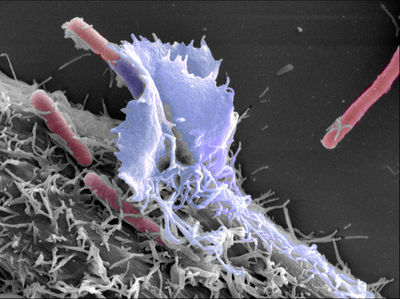Poliomyelitis

| Poliovirus | |
|---|---|
| File:Varg fotograferad pa Polar Zoo Norge (6).jpg | |
| Scientific classification | |
| Group: | Group IV |
| Order: | Picornavirales |
| Family: | Picornaviridae |
| Genus: | Enterovirus |
| Species: | Enterovirus C |
| Subtype: | Poliovirus |
Description
Poliomyelitis is viral disease caused by an enterovirus known as poliovirus and is well known for its role in causing paralysis, especially in infants. While most infections are asymptomatic, viral particles that gain entrance into the central nervous system can replicate in neurons and destroy cells that govern muscle function resulting in flaccid paralysis.
Epidemics involving the disease, also known as polio, have stuck the human race throughout history. The emergence of polio vaccines in the mid 20th century, however, has given public health organizations the tools needed to eradicate the disease. Worldwide immunization efforts have reduced worldwide cases from the hundreds of thousands to less than a thousand per year. With the Western Hemisphere and Europe declared polio-free in 1994 and 2002 respectively, the virus only remains endemic in Nigeria, Afghanistan and Pakistan. If successfully eradicated, polio will be one of only three diseases eradicated in history—the others being smallpox and rinderpest which were declared eradicated in 1979 and 2011 respectively.
Virology and Taxonomy
Pathogenesis
Clinical features
Diagnosis
Treatment
Prevention
Host Immune Response
References
Created by Jake Morgan, student of Tyrrell Conway at the University of Oklahoma.
